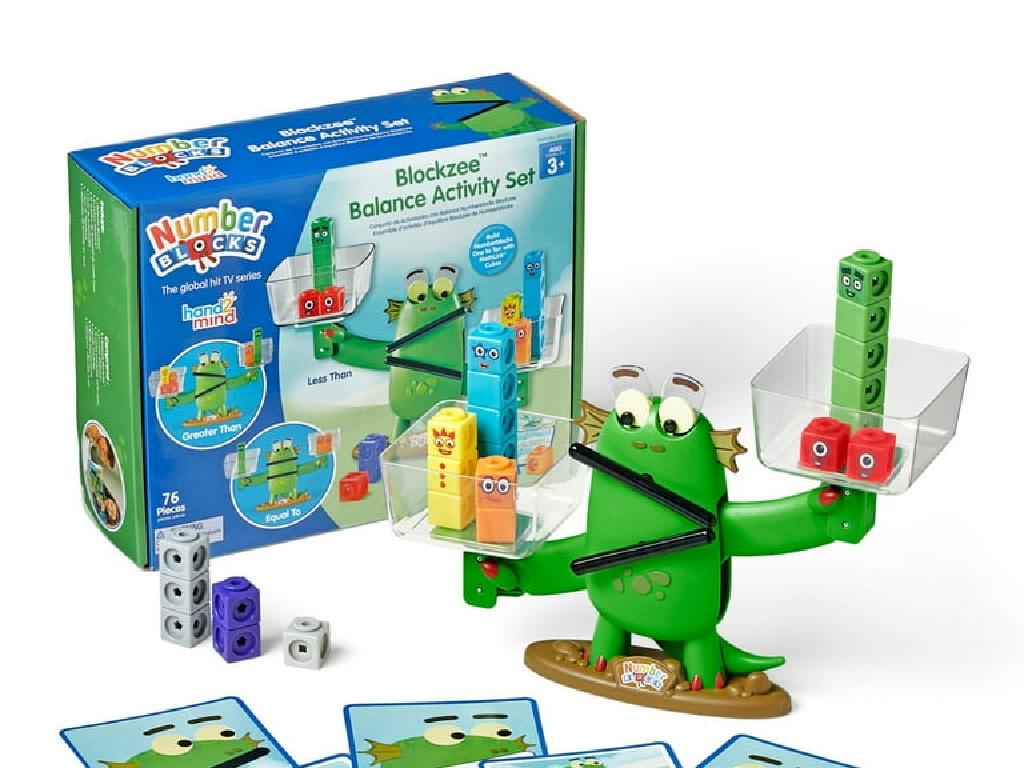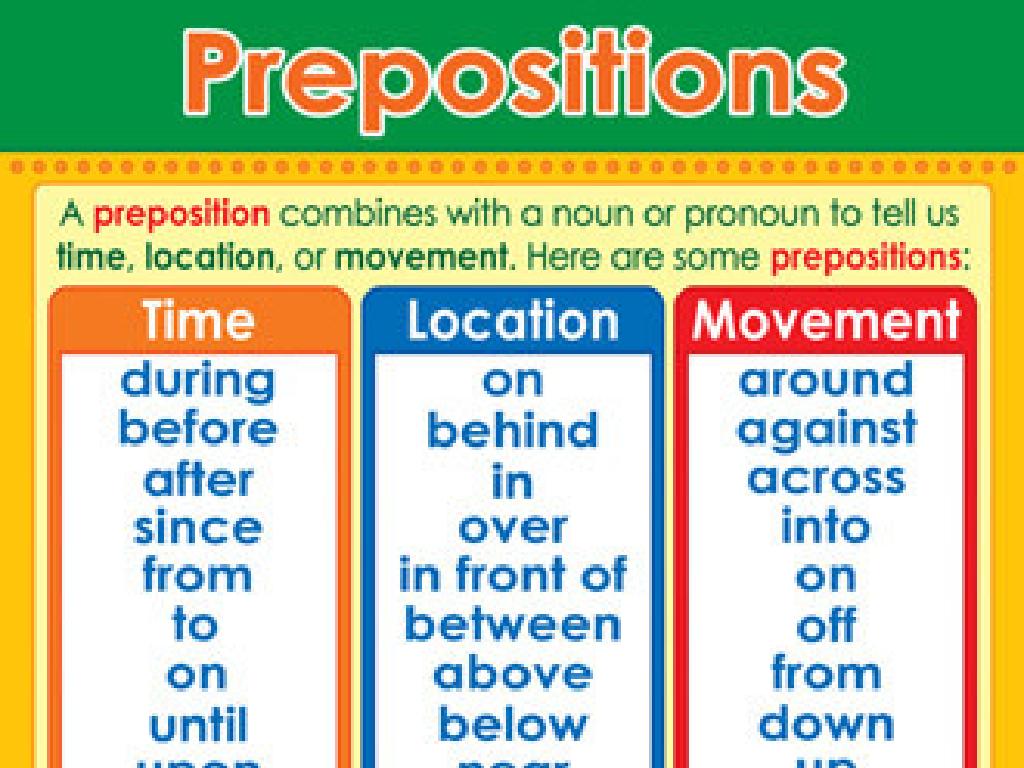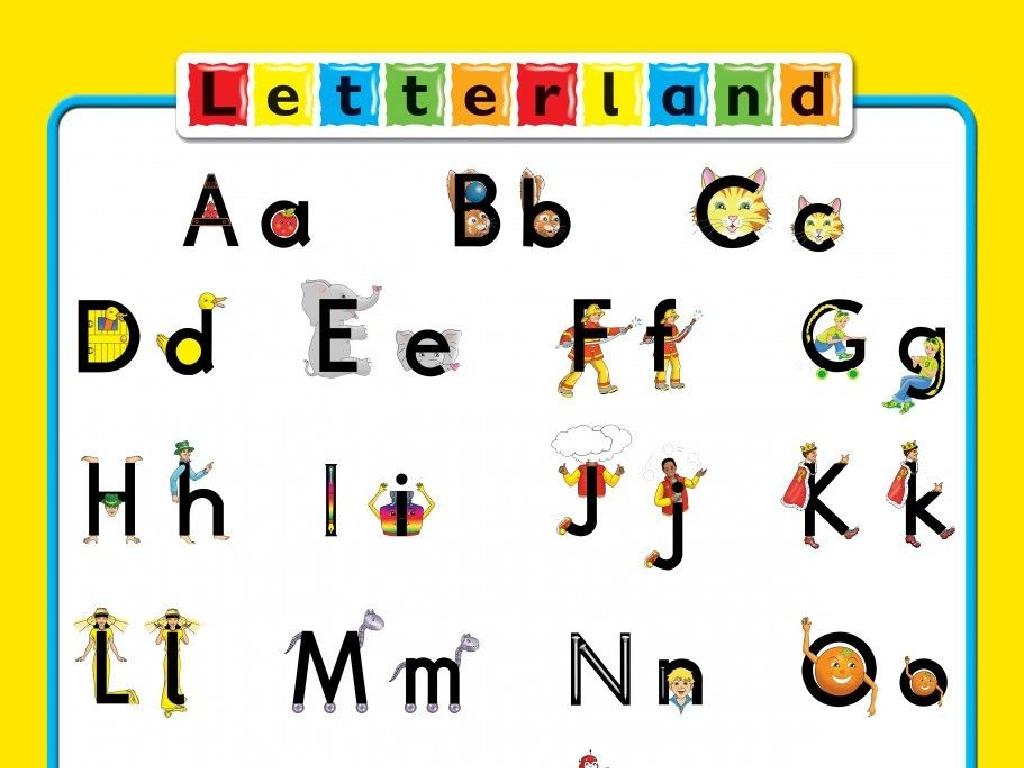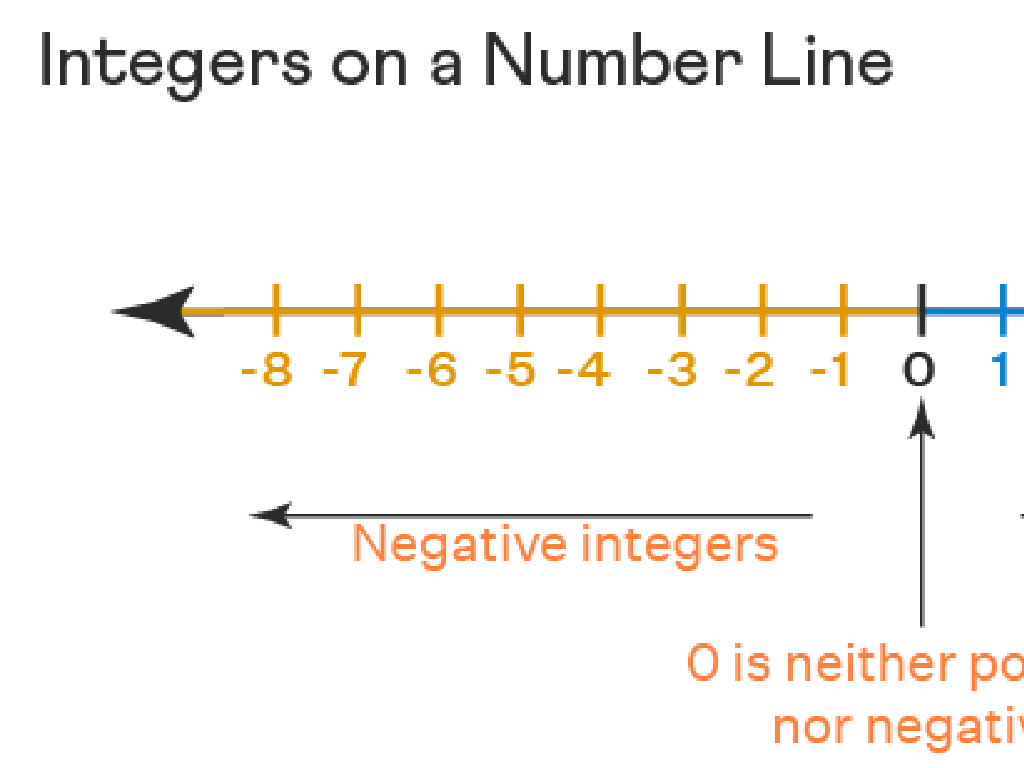Change-Of-State Diagrams: Solid And Liquid
Subject: Science
Grade: Second grade
Topic: Changes Of State
Please LOG IN to download the presentation. Access is available to registered users only.
View More Content
Changes of State: Solid to Liquid
– Exploring states of matter
– Matter can be solid, liquid, or gas
– Solids can become liquids
– Heat can turn ice into water
– Examples of solids and liquids
– Ice, rocks are solids; water, milk are liquids
– How does a solid change to liquid?
– Heat makes solids melt into liquids
|
This slide introduces the concept of states of matter, focusing on solids and liquids. Begin by explaining that matter can exist in different forms: solid, liquid, and gas. Use relatable examples like ice (solid) turning into water (liquid) when it gets warm. Ask the students to name objects around them that are solid and those that are liquid to make the concept more tangible. Explain that heating a solid can make it melt into a liquid. This will set the foundation for understanding how temperature affects the state of matter. Encourage the children to think of times they’ve seen a solid change into a liquid in their daily lives, like ice cream melting on a hot day.
Exploring Solids in Science
– Solids have their own shape
– Think of a brick or a toy car
– Solids do not flow like liquids
– Fixed volume and shape
– They don’t get squished easily
– Examples: Ice, Wood, Rocks
– Ice cubes in your drink, wooden blocks, stones in the park
|
This slide introduces the concept of solids to second graders. Begin by explaining that solids are one of the three basic states of matter and have their own shape, unlike liquids or gases. Use tangible examples like toys or classroom objects to illustrate that solids do not flow and maintain their shape and volume. Show them examples of solids they are familiar with, such as ice, wood, and rocks, and discuss their properties. Encourage the students to think of other solids and how they are different from liquids and gases. This will help them understand the concept of a solid in the context of state changes.
Exploring Liquids
– Liquids can flow
– Like water in a glass
– They fit in containers
– Takes the shape of any container
– Fixed volume, no shape
– They can’t be squished; they don’t stack like blocks
– Examples: Water, Juice
– Milk is also a liquid we drink
|
This slide introduces the concept of liquids to second-grade students. Emphasize that liquids, such as water, juice, and milk, can move around and change shape to fit inside different containers. However, the amount of liquid stays the same it has a fixed volume. Use hands-on examples if possible, like pouring water into different shaped containers to show how it changes shape but not volume. Ask students to think of other liquids they know and discuss their properties.
Changing States: Solid to Liquid
– Solids melt into liquids when warm
– Like chocolate melting in your hand!
– ‘Melting’ is this change
– When solid things get really warm, they turn into a liquid.
– Example: Ice to water
– Ice cubes melt into water on a sunny day.
– Melting in our daily life
– Butter melting on warm toast, popsicles melting in the sun.
|
This slide introduces the concept of melting, where a solid changes to a liquid when it’s heated. Start by explaining that heat makes solids warm and causes them to melt. Define ‘melting’ as the term for this change. Use familiar examples like ice melting into water to illustrate the concept. Discuss everyday examples of melting that students might encounter, such as butter on toast or popsicles in the sun, to make the concept relatable. Encourage students to think of other examples and share their experiences with melting objects.
Change-of-State: Solid to Liquid
– Diagram: Solid becomes liquid
– A picture showing ice turning to water
– Observe melting temperature
– The temperature where ice starts to turn into water
– ‘Melting point’ explained
– The special temperature where solids begin to liquefy
– Importance of melting point
|
This slide introduces students to the concept of a change-of-state diagram, focusing on how a solid changes into a liquid. Use a diagram to show the transition of a solid, like ice, melting into water. Highlight and label the melting point on the diagram, explaining that it’s the specific temperature at which a solid will start to turn into a liquid. Emphasize the importance of the melting point in everyday life, such as understanding why ice melts on a warm day. Encourage students to think of other examples of solids melting into liquids and to consider what might happen if the temperature increases or decreases.
Let’s Experiment: Melting Ice!
– Observe ice melting into water
– Discuss heating ice predictions
– What changes do you expect when ice is heated?
– Guess the melting time for ice
– Estimate how many minutes until the ice turns to water
– Record observations in your journal
– Write down what you see at different times
|
This slide introduces a hands-on class activity where students will observe the process of ice melting into water, fostering their understanding of state changes from solid to liquid. Begin by asking students to predict what happens when ice is heated and how long they think it will take to melt completely. Provide each student or group with an ice cube and a timer. As the ice melts, encourage them to note the changes they observe and the time it takes for the ice to become water. This activity will help them grasp the concept of phase change due to heat and the passage of time. After the experiment, discuss the results with the class to reinforce their learning.
Class Activity: Melting Ice
– Each student receives an ice cube
– Observe ice melting at room temperature
– Draw the melting ice on your worksheet
– Sketch how the ice looks at the start, middle, and end.
– Notice the change from solid to liquid
– See how a solid ice turns into water.
|
This activity is designed to help students understand the concept of phase change from solid to liquid through direct observation. Distribute an ice cube to each student and have them place it on a plate or tray at room temperature. Provide worksheets with a section divided into three parts: ‘Start’, ‘Middle’, and ‘End’. Students should draw the state of the ice cube at these intervals. Encourage them to touch and feel the ice cube and observe the water forming around it. Discuss the process of melting and how heat from the room changes the ice from solid to liquid. After the activity, discuss their observations as a class and reinforce the concept of phase change. This hands-on experience will help solidify their understanding of states of matter.
Review: Solids and Liquids
– Recap on solids and liquids
– Define ‘melting point’
– The temperature at which a solid becomes a liquid
– Discuss ice melting observations
– Share what you saw when the ice turned into water
– Questions and answers session
|
This slide aims to review the key concepts learned about the states of matter, specifically solids and liquids. Start by asking the students to share what they remember about the characteristics of solids and liquids. Then, move on to the term ‘melting point’ and ask for volunteers to explain this concept in their own words. Reflect on the ice melting activity by discussing the observations the students made, such as changes in shape, temperature, and state. Encourage them to ask questions and express their thoughts. This interactive session will help solidify their understanding of how matter changes state from solid to liquid.
Solid to Liquid: The Melting Marvel
– Solids transform into liquids
– This change is called melting
– ‘Melting’ is when solid becomes a liquid because it gets warm
– Observe melting in daily life
– Ice to water, butter on warm toast
– Keep exploring changes around you
|
Congratulations to the class for learning about the transition from solid to liquid, known as melting. Reinforce the concept by reminding students that melting occurs when solids like ice or butter are heated and they turn into liquids. Encourage them to continue observing such changes in their environment, like when ice cream melts or when snow turns into water. This will help them connect the concept to real-world experiences and understand the practical applications of what they’ve learned in class.






